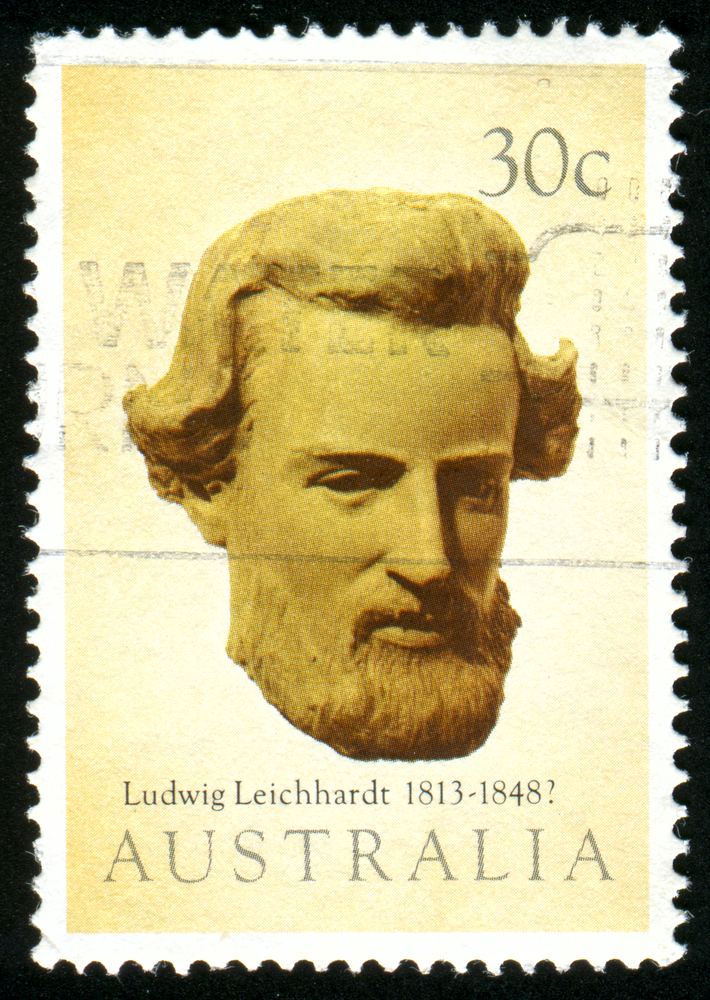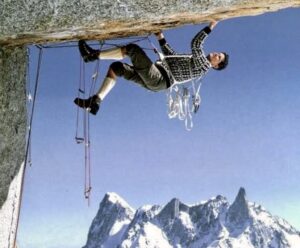For German explorer and self-taught naturalist Friedrich Wilhelm Ludwig Leichhardt, the Australian Outback was “a challenge to survival, for adventure and pioneering.” He took on the challenge, fearlessly advancing into the red desert interior of Northern and Central Australia.
However, his contributions to biology, geology, and geography suddenly stopped when Leichhardt and his team vanished in 1848. To this day, his fate remains a mystery. But some tantalizing clues remain as to what may have transpired.

Portrait of Ludwig Leichhardt by Isobel Fox in 1846.
A driven man
Leichhardt was a resourceful, passionate, driven man, with an affinity for natural science. Between 1831 and 1837, he studied languages, medicine, philosophy, biology, and geology at the Universities of Berlin, Gottingen, and the Royal College of Surgeons. Leichhardt had a reputation for pushing himself too hard and suffered bouts of anxiety and depression. He elected not to pursue an official degree, and instead preferred to get hands-on experience in the field.
He arrived in Australia in 1842. Here, he studied plants and rocks in the Hunter River Valley before setting off on an expedition from Darling Downs in Queensland to Port Essington in the Northern Territory (1844-1846).
On this journey, Leichhardt and his company of 10 traveled 8,000km. During their journey, Leichhardt named Seven Emu Creek and discovered the Mitchell, Lynd, and Burdekin rivers. Their journey took so long that the Australian public presumed that they were dead. When they reappeared in Sydney in March 1846, the public greeted them as conquering heroes. The government awarded Leichhardt a £1,000 grant for future adventures.
The expedition was a huge success, but it was not without incident. Leichhardt’s friend and fellow explorer John Gilbert died in an Aboriginal attack during the expedition. In his journal, Leichhardt explained that Gilbert “was stooping to get out of his tent” when a spear fatally pierced him.

Leichhardt’s map. Photo: National Library of Australia
Second expedition
Leichhardt’s second expedition, in December 1846, was not so successful. The plan was to travel from the Darling Downs to Perth with 14 men, including researchers and several Aboriginals. Harsh weather, malaria, and food shortages resulted in a near mutiny. Leichhardt was not prepared for these challenges, and they turned back five months into their planned two-year expedition.
According to several sources, Leichhardt was more concerned with fame than with the well-being of the company. Historian Dan Sprod believes that the expedition’s failure was down to environmental forces and poor decision-making.
After this fiasco and a bout of malaria, Leichhardt was determined to get back into the field. He embarked on a smaller expedition to the Condamine River and prepared for a third expedition, which would become his last.
The disappearance
In April 1848, Leichhardt organized a two-year journey from the Condamine River to the Swan River. They left the Condamine River in force. The party included five Europeans (including Leichhardt), two Aboriginal guides named Wommai and Billy Bombat, 50 bullocks, 20 mules, and seven horses. The party was last seen on April 3, 1848, at Cogoon in Darling Downs. It would be four years before a search began.
Clues

One of the “L”-marked trees. Photo: State Library of South Australia
Subsequent expeditions in the area found a series of trees marked with the letter “L”. Perhaps Leichhardt marked these trees to indicate his path.
In 1851, the government of New South Wales sent out a search party under Hovenden Hely. They traveled from Brisbane to the Maranoa district. Along the way, they heard that Aboriginals had slaughtered white men and their animals west of Mount Abundance. They eventually came upon an “L” carved over the letters “XVA” on a tree.
In 1858, explorer Augustus Gregory went to find Leichhardt. He too found an “L” tree near the Barcoo River. Six years later, a man named Duncan McIntyre found two more “L” trees near the Flinders River, along with two decomposed horses. People continued to find these “L” trees in a westerly direction until the 1950s.


Another Leichhardt tree, on the main street of Taroom, Queensland, top, and in its original wild setting, below. Photos: Centre for the Government of Queensland
In 1895, David Carnegie crossed the Great Sandy Desert from south to north. He came across a group of Aboriginals in Ildawongga who had part of a saddle, a tent peg, and the lid of a matchbox. Could these have been some of Leichhardt’s possessions?
In 1900, an Aboriginal stockman named Jacky found the most intriguing piece of evidence. A brass plate inscribed “Ludwig Leichhardt 1848” was attached to a gun beside an “L”-marked boab tree near Sturt Creek. Chemical analyses determined that the plate was made sometime in the 19th century, contained sulfur residue from gunpowder, and bore signs of fire damage. The gun itself was partially burned. The Royal Geographical Society believed that the objects were likely genuine.

Other hints
Other clues included folk tales of mixed Aboriginal and European children, bullocks roaming in the area, horse tracks where Leichhardt presumably disappeared, and Aboriginals who claimed to have seen dead horses and riders. In 1889, Aboriginals living on the Ninety Mile Beach at the edge of the Great Sandy Desert told a man named Alec McPhee of an incident 40 years prior. They had tracked three or four white men on horses but found them all dead. They likely died of starvation and thirst.
Historian Darrell Lewis has spent 50 years as an archeological researcher in Australia’s Northern Territory and has also attempted to unravel the mystery. While Lewis was unable to find any “L” trees at Sturt Creek, he dove into the oral history and existing physical evidence (including Leichhart’s personal letters). He believes that Leichhardt’s men died in the Great Sandy Desert.
He suggests that Leichhardt followed Sturt Creek to Lake Gregory and kept pressing forward, while some of the men may have turned back. Considering his inability to accept failure, it is very possible Leichhardt trudged through the desert until his death. However, this is still speculation, and the mystery endures.





